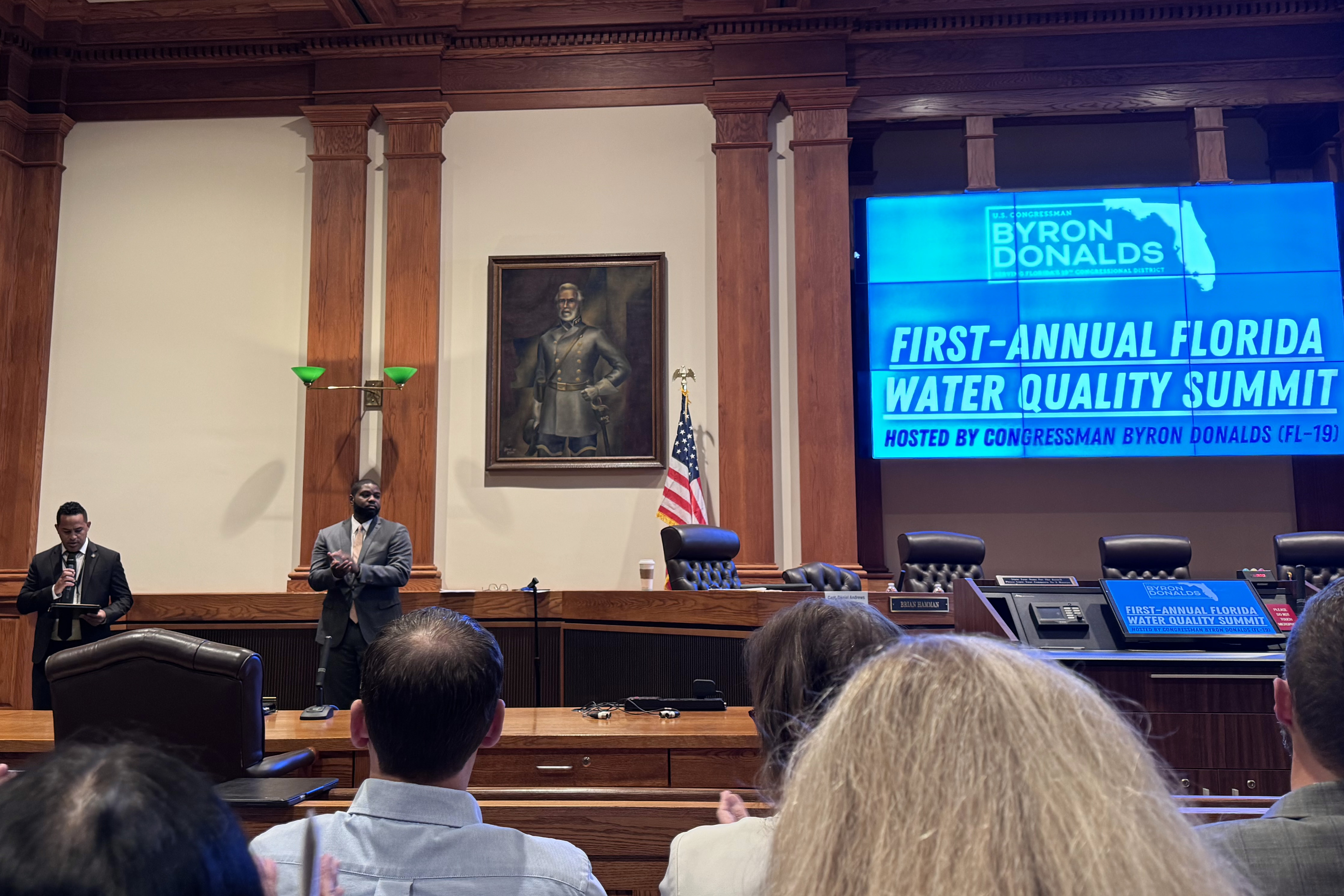NGI Scientist Shares Innovative Research at Florida's 1st Annual Water Quality Summit
September 4, 2024

(Top, to the right) Congressman Byron Donalds (FL-19) welcomed participants to the state's first annual Water Quality Summit in Fort Myers, Florida. Image provided by Luke Thompson, NGI/MSU.
Congressman Byron Donalds (FL-19) recently hosted the state's first annual
Water Quality Summit in Fort Myers, Florida. The event brought together a wide-range of stakeholders – from industry, government, and academia to non-profit conservation organizations and the public – for open discussions about challenges to and collaborative solutions for protecting Florida's unique marine ecosystems. While water quality issues affect economies across the U.S., Florida's tourism and fishing industries have been particularly impacted by a series of large red tide (Karenia brevis) events, also known as harmful algal blooms, in 2013, 2016, and 2018 that affect public health and natural resources.
One of the invited panelists was Luke Thompson, an associate research professor at Mississippi State University with the Northern Gulf Institute who is based at the National Oceanic and Atmospheric Administration's Atlantic Oceanographic and Meteorological Laboratory in Miami. During the panel session titled "Innovative Solutions to Combat Water Quality Challenges," Thompson explained how methods that monitor environmental DNA (eDNA) can be used to track ecosystem health and water quality in Florida.
"The response from the audience was overwhelmingly positive," said Thompson. "Several scientists working in Florida water quality issues have reached out to learn more about applying eDNA technology to their monitoring efforts."
Thompson discussed how eDNA, which is all the organismal DNA in an environment, and the technologies used to measure it can provide cheaper, faster, less invasive, and more precise assessments of harmful algal blooms and ecosystem status than traditional monitoring methods. He also discussed the continuing need to develop best practices, data standards, and establish national reference databases and data repositories.
The eDNA monitoring technique that Thompson spoke about has been featured in scientific, peer-reviewed journals, including an article in
Current Opinion in Biotechnology. This perspective article explores the current state and future of eDNA technology for biomonitoring, making the case that standardized sampling, DNA sequencing, data analysis, and data management will reveal patterns of marine biodiversity and help monitor and predict harmful algal blooms like those affecting Florida and the Gulf of Mexico.
**********
The
Atlantic Oceanographic and Meteorological Laboratory (AOML) is a federal research laboratory and part of NOAA's Oceanic and Atmospheric Research line office. AOML studies hurricanes, coastal ecosystems, climate, global carbon, and how the ocean changes over time to improve prediction and management services for the nation.
The
Northern Gulf Institute is a NOAA Cooperative Institute with six academic institutions located across the US Gulf Coast states that conducts research and outreach on the interconnections among Gulf of Mexico ecosystems for informed decision making. AOML is the NOAA laboratory with which NGI works most closely.
By
Nilde Maggie Dannreuther and
Luke Thompson with the Northern Gulf Institute, Mississippi State University.
